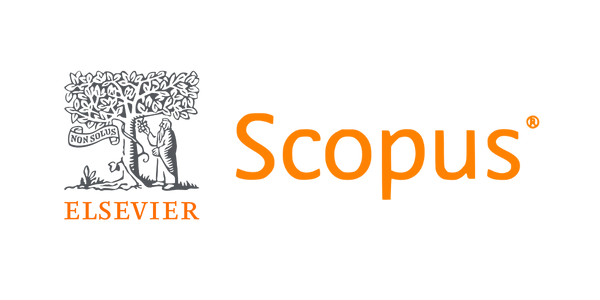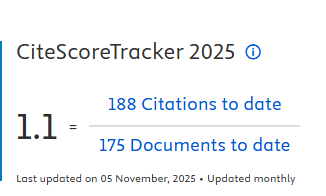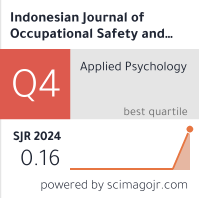The Implementation of the POPMAR (Policy, Organising, Planning and Implementing, Measuring Performance, Audit and Reviewing) Model in Occupational Health and Safety Risk Management in an Indonesian Batik Company
Downloads
Introduction: In 2009, UNESCO declared Batik Indonesia as an Intangible Cultural Heritage of Humanity. This study examines the occupational health and safety hazards and risks that arise in a Batik company based on a case example of a Batik company in Surakarta, Indonesia. In Indonesia, Batik is categorized as traditional attire. Two kinds of Batik are produced - Batik tulis (traditionally handcrafted) and Batik printing, which uses specific printing tools. The UK Health Safety Executive (HSE) risk assessment framework is referred to in this study, which consists of: hazard identification, population exposure, risk evaluation, precaution development, recording findings, and regular appraisal of systems. Methods: Both observation and interviews (of workers) at the Batik company were utilized for this study as well as an independent risk assessment. Results: The findings highlighted physical, ergonomic, chemical, mechanical, and biological hazards, originating from the materials, tools, and working methods utilized in the batik production. Conclusion: Many of the issues highlighted by this study can be addressed via in-depth risk assessment, using the POPMAR model to frame the activities. This approach can create a positive pathway, leading to a continuous cycle of improvement which puts the workers' health at the forefront of the business activities.
Keywords: Batik, workers, hazard identification, HSE Model, risk management
Afriansyah, A. et al. (2013) Manajemen Kesehatan Dan Keselamatan Kerja di PT. APAC INTI CORPORA. Scientific Articles. Surakarta: Faculty of Medicine, Universitas Sebelas Maret.
Agustina, F. and Maulana, A. (2012) ‘Analisis Postur Kerja dengan Tinjauan Ergonomi di Industri Batik Madura', Jurnal Inovasi dan Kewirausahaan, 1(3), pp. 167–171.
Anis, M., Wijaya, G. G. and Muslimah, E. (2015) ‘Implementasi Kesehatan dan Keselamatan Kerja (K3) di Industri Batik (Studi Kasus di Industri Batik "GT” Laweyan Surakarta', in Seminar Nasional IENACO, pp. 139–147.
Aryanti, N. et al. (2015) ‘Micellar-Enhanced Ultrafiltration Membrane (MEUF) of Batik Wastewater using Cetylpyridinium Chloride Surfactant', in AIP Conference Proceedings.
Bayram, M., Ünğan, M. C. and Ardıç, K. (2017) ‘The Relationships between OHS Prevention Costs, Safety Performance, Employee Satisfaction and Accident Costs', International Journal of Occupational Safety and Ergonomics, 23(2), pp. 285–296.
Buica, G. et al. (2017) ‘Occupational Health and Safety Management in Construction Sector - The Cost of Work Accidents', Quality - Access to Success, 18(January (S1)), pp. 35–40.
Burdyny, T. and Smith, W. A. (2019) ‘CO2 Reduction on Gas-Diffusion Electrodes and Why Catalytic Performance must be Assessed at Commercially-Relevant Conditions', Energy and Environmental Science, 12(5), pp. 1442–1453.
Climate Institute (2021).
Day, A. and Nielsen, K. (2017) ‘What Does Our Organization Do to Help Our Well-Being ? Creating Healthy Workplaces and Workers', in An Introduction to Work and Organizational Psychology. United Kingdom: John Wiley & Sons, Ltd, pp. 295–314.
Dominick E. Fazarro, Walt Trybula, Jitendra Tate, Craig Hanks, C. M. S. (2017) ‘5. Certification: Validating Workers' Competence in Nano-safety', in Nano-Safety.
Dyrenforth, N. (2003) Batik: Modern Concepts and Techniques - Noel Dyrenforth - Google Buku. London : Batsford.
Gaffney, D. (2021) What is Batik?, The Batik Guild.
Health and Safety Executive (2013) Managing for Health and Safety (HSG65). London: The National Archives.
Health and Safety Executive (2016) Risk Assessment, Health and Safety Executive.
Ismail, H. N. (2020) Evaluation Measures and Approaches for Design Process Performance. Sientific Article. Malaysia: Ministry of Education Malaysia.
John, S. M. et al. (2020) Kanerva ' s Occupational Dermatology.
Kanerva, L. (2000) Handbook of Occupational Dermatologyy.
Lestari, F. (2010) Bahaya Kimia Sampling dan Pengukuran Kontaminan di Udara. Jakarta: Penerbit Buku Kedokteran EGC.
Litman, R. S. (2019) ‘Use of a Public Health Law Framework to Improve Medication Safety by Anesthesia Providers', Journal of Patient Safety and Risk Management, 24(4), pp. 158–165.
Mabindisa, V. (2013) Impact of Staff Turnover on Organisational Effectiveness and Employee Performance at the Department of Home Affairs in the Eastern Cape Province. Thesis. Durban: Faculty of Management Sciences, Durban University of Technology.
Maharani, F. T. et al. (2020) ‘The Intervention of Chair and " Gawangan ” Among Batik Workers at a Company in Indonesia', in Proceedings of the International Conference of Health Development, pp. 135–152.
Marchand, A., Demers, A. and Durand, P. (2005) ‘Do Occupation and Work Conditions Really Matter? A Longitudinal Analysis of Psychological Distress Experiences Among Canadian Workers', Sociology of Health and Illness, 27(5), pp. 602–627.
Melese, H. et al. (2020) ‘Prevalence and Associated Factors of Musculoskeletal Disorders Among Cleaners Working at Mekelle University, Ethiopia'', Journal of Pain Research, 13, pp. 2239–2246.
Ministry of Industry of Republic of Indonesia (2021) Batik Indonesia Masih Lebih Baik, Jakarta: Ministry of Industry of Republic of Indonesia.
National Center for Biotechnology Information (2016) Reactive Blue 19, Bethesda: National Center for Biotechnology Information.
Nesticò, A. et al. (2018) ‘The ALARP Principle in the Cost-Benefit Analysis for the Acceptability of Investment Risk', Sustainability, 10(12), pp. 1–22.
Nkwocha, A. C., Ekeke, I. C. and Olele, P. . (2018) ‘Health , Safety and Environment in Oil and Gas', International Journal of Engineering Applied Sciences and Technology, 3(7), pp. 51–56.
Osborne, S. and Hammoud, M. S. (2017) ‘Effective Employee Engagement in the Workplace', International Journal of Applied Management and Technology, 16(1), pp. 50–67.
Saisandhiya, N. R. (2020) ‘Hazard Identification and Risk Assessment in Petrochemical Industry', International Journal for Research in Applied Science and Engineering Technology, 8(9), pp. 778–783.
Santa Cruz Biotechnology (2011a) Material Safety Data Sheet : Reactive Orange 16.
Santa Cruz Biotechnology (2011b) Material Safety Data Sheet : Reactive Red 120.
Sari, S. R., Lubis, M. Y. and Aisha, A. N. (2015) ‘Perancangan Prosedur Untuk Meminimasi Risiko K3 Berdasarkan Hasil HIRARC untuk Memenuhi Requirement OHSAS 18001:2007 Klausul 4.4.7 Dan 4.5.1 Serta Peraturan Pemerintah No. 50 Tahun 2012 Di Rumah Batik Komar', e-Proceeding of Engineering, 2(2), pp. 4952–4959.
Shanker, R. et al. (2017) ‘Organizational Climate for Innovation and Organizational Performance: The Mediating Effect of Innovative Work Behavior', Journal of Vocational Behavior. 100(June), pp. 67–77.
Soebaryo, R. W. and Budianti, W. K. (2020) ‘Batik Manufacturing Workers', in John, S. M. et al. (eds) Kanerva's Occupational Dermatology. Switzerland: Springer International Publishing, pp. 1743–1751.
Soltanzadeh, A. et al. (2016) ‘Key Factors Contributing to Accident Severity Rate in Construction Industry in Iran: A Regression Modelling Approach', Arhiv za Higijenu Rada i Toksikologiju, 67(1), pp. 47–53.
Sumardiyono et al. (2014) ‘Effectiveness of Ergonomic Chair against Musculoskeletal Disorders in Female Batik Workers of Sragen District', Makara Journal Health Research, 18(2), pp. 95–102.
Suprihatin, H. (2014) ‘Kandungan Organik Limbah Cair Industri Batik Jetis Sidoarjo Dan Alternatif Pengolahannya', Jurnal Kajian Lingkungan, 2(2), pp. 130–138.
Susilowati, I. H. et al. (2017) ‘Predictive Factors for Quality of Life Among Small and Medium Enterprise Workers in Indonesia', Asian Journal of Applied Sciences, 10(3), pp. 116–125.
The Institution of Occupational Safety and Health (IOSH) (2016) Musculoskeletal Disorders, Wigston: The Institution of Occupational Safety and Health (IOSH).
Trixie, A. A. (2020) ‘Filosofi Motif Batik Sebagai Identitas Bangsa Indonesia', Folio, 1(1).pp. 1-9.
UNESCO (2009) Indonesian Batik, Paris: United Nations Educational, Scientific and Cultural Organization (UNESCO).
US EPA (2009) Risk Assessment Guidance for Superfund Volume I: Human Health Evaluation Manual (Part F, Supplemental Guidance for Inhalation Risk Assessment), Office of Superfund Remediation and Technology Innovation Environmental Protection Agency. Washington D.C: Environmental Protection Agency.
Walden, J., Jung, E. H. and Westerman, C. Y. K. (2017) ‘Employee Communication, Job Engagement, and Organizational Commitment: A Study of Members of the Millennial Generation', Journal of Public Relations Research, 29(2–3), pp. 73–89.
Williams, O. S., Hamid, R. A. and Misnan, M. S. (2019) ‘Causes of Building Construction Related Accident in the South-Western States of Nigeria', International Journal of Built Environment and Sustainability, 6(1), pp. 14–22.
De Winne, S. et al. (2019) ‘The Impact of Employee Turnover and Turnover Volatility on Labor Productivity: A Flexible Non-Linear Approach', International Journal of Human Resource Management, 30(21), pp. 3049–3079.
Yiu, N. S. N. et al. (2019) ‘Implementation of Safety Management System in Managing Construction Projects: Benefits and Obstacles', Safety Science, 117, pp. 23–32.
Yoon, S. J. et al. (2013) ‘Effect of Occupational Health and Safety Management System on Work-Related Accident Rate and Differences of Occupational Health and Safety Management System Awareness between Managers in South Korea ' s Construction Industry', Safety and Health at Work, 4(4), pp. 201–209.
Zaharee, M. et al. (2018) ‘Recruitment and Retention of Early-Career Technical Talent: What Young Employees Want from Employers A Study of the Workplace Attributes that Attract Early-Career Workers Suggests that Millennials may not be so Different from Earlier Generations.', Research Technology Management, 61(5), pp. 51–61.

In order to be accepted and published by The Indonesian Journal of Occupational Safety and Health, Author(s) who submit an article should complete all the review process. The copyright of received articles assigned to the The Indonesian Journal of Occupational Safety and Health and Department of Safety and Health, Universitas Airlangga as publishers of the journal. The intended copyright includes the rights to publish articles in various forms (including reprints).
The Editorial Team of The Indonesian Journal Of Occupational Safety and Health and Department of Safety and Health strive to ensure that no errors occur in the articles that have been published, both data errors and statements in the article.
Users of this website will be licensed to use materials from this website following the Creative Commons Attribution-NonCommercial-ShareAlike 4.0 International License. No fees charged. Please use the materials accordingly.
------------------------------------------------------------------------------------------------------------------------------------------------------------------------------------------
Attribution ” You must give appropriate credit, provide a link to the license, and indicate if changes were made. You may do so in any reasonable manner, but not in any way that suggests the licensor endorses you or your use.
NonCommercial ” You may not use the material for commercial purposes.
ShareAlike ” If you remix, transform, or build upon the material, you must distribute your contributions under the same license as the original.







 How to Submit Articles in OJS
How to Submit Articles in OJS

























